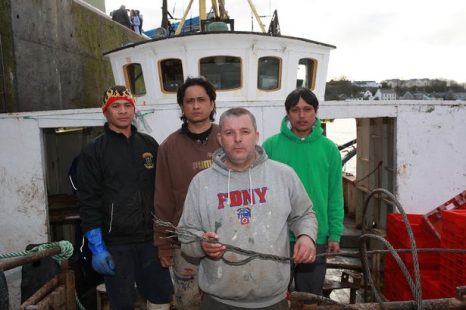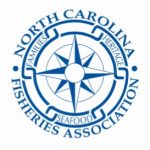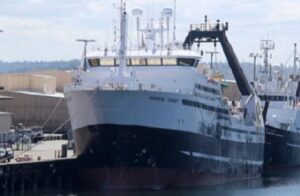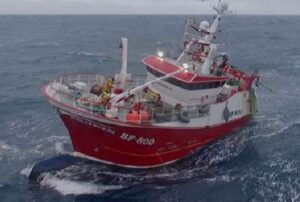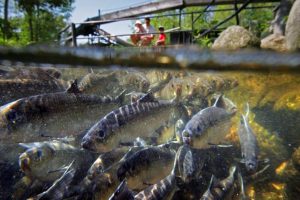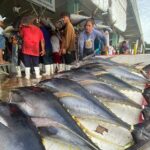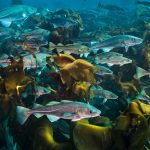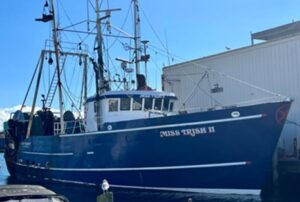Monthly Archives: October 2016
Salmon advocate and biologist Alexandra Morton Sues DFO for Allegedly Failing to Protect Wild Salmon
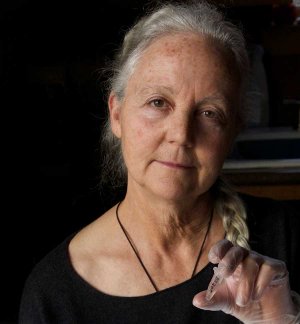 Salmon advocate and biologist Alexandra Morton is suing the Minister of Fisheries and Oceans, alleging the DFO is putting wild salmon at risk by failing to inspect hatchery fish for a known virus prior to transferring them to fish farms. Morton’s lawsuit charges the department with breaking fisheries regulations that say the minister can only issue a licence allowing fish farmers to transfer fish if they “do not have any disease or disease agent that may be harmful to the protection and conservation of fish.” Regulations also require the minister to ensure the transfer won’t have an “adverse effect” on other fish stocks. Morton won a similar legal case in 2015, after suing the Department of Fisheries and Oceans and Marine Harvest for transferring Atlantic salmon infected with piscine reovirus into its ocean feedlot operations. The virus is associated with Heart and Skeletal Muscle Inflammation (HSMI), a contagious and often fatal disease that has hit Norwegian and Chilean fish farms. Read the rest here 11:12
Salmon advocate and biologist Alexandra Morton is suing the Minister of Fisheries and Oceans, alleging the DFO is putting wild salmon at risk by failing to inspect hatchery fish for a known virus prior to transferring them to fish farms. Morton’s lawsuit charges the department with breaking fisheries regulations that say the minister can only issue a licence allowing fish farmers to transfer fish if they “do not have any disease or disease agent that may be harmful to the protection and conservation of fish.” Regulations also require the minister to ensure the transfer won’t have an “adverse effect” on other fish stocks. Morton won a similar legal case in 2015, after suing the Department of Fisheries and Oceans and Marine Harvest for transferring Atlantic salmon infected with piscine reovirus into its ocean feedlot operations. The virus is associated with Heart and Skeletal Muscle Inflammation (HSMI), a contagious and often fatal disease that has hit Norwegian and Chilean fish farms. Read the rest here 11:12
OPINION: Tidal power from Fundy — Separating fact from fiction, Graham Daborn Emeritus Professor at Acadia University
There have been a number of statements in the media over the last few months about the testing of in Minas Passage. Regrettably, inaccurate and exaggerated claims have led to a good deal of public apprehension and confusion. It only takes a few seconds to make an inaccurate or ridiculous statement. Explaining why a statement is untrue or ridiculous, unfortunately, takes rather more time or space. The following addresses a few of these issues. Claim 1: That the turbines to be installed at FORCE will “chop whales into sushi for seabirds to eat.” In response to a question during a CBC interview (on The Current, June 15), a spokesperson for the Bay of Fundy Inshore Fisherman’s Association said: “This is not a suggestion; it is a fact.”,,, The only way to determine that is to install a turbine with monitoring equipment in place to establish the animals’ responses. At present, there is absolutely no evidence that mammals would be at risk of death or injury from the turbines to be tested in Minas Passage, although they may end up having to forage elsewhere. Read the op-ed here, and keep up the fight! 10:55
in Minas Passage. Regrettably, inaccurate and exaggerated claims have led to a good deal of public apprehension and confusion. It only takes a few seconds to make an inaccurate or ridiculous statement. Explaining why a statement is untrue or ridiculous, unfortunately, takes rather more time or space. The following addresses a few of these issues. Claim 1: That the turbines to be installed at FORCE will “chop whales into sushi for seabirds to eat.” In response to a question during a CBC interview (on The Current, June 15), a spokesperson for the Bay of Fundy Inshore Fisherman’s Association said: “This is not a suggestion; it is a fact.”,,, The only way to determine that is to install a turbine with monitoring equipment in place to establish the animals’ responses. At present, there is absolutely no evidence that mammals would be at risk of death or injury from the turbines to be tested in Minas Passage, although they may end up having to forage elsewhere. Read the op-ed here, and keep up the fight! 10:55
Letter confirms FFAW boss Keith Sullivan is out of touch, by Ryan Cleary
 I wish to respond to Keith Sullivan’s Oct. 8th letter to the editor, “Cleary would divide, not conquer,” by agreeing with his statement that I’m “no Richard Cashin.” But then, I have no desire to be. It’s ironic that Sullivan should bring up Cashin. Prior to a mid-September public meeting in Corner Brook to gauge interest in a new union specifically for fish harvesters, I was pulled aside by Stella Mailman, a senior from Port aux Choix, who still fishes with her husband. (Because she “has to.”) Stella told me how she went around decades ago with Cashin and the late Father Des McGrath, signing up fishermen on the Great Northern Peninsula for the union when it got off the ground. Stella said she was compelled to attend the Corner Brook meeting to see “history repeat itself,” because, as so many agree, it’s “time for change.” Stella later took to an open microphone and raised her fist in defiance of the union Cashin created. As watershed moments go, that was a doozy. Read the rest here 09:55
I wish to respond to Keith Sullivan’s Oct. 8th letter to the editor, “Cleary would divide, not conquer,” by agreeing with his statement that I’m “no Richard Cashin.” But then, I have no desire to be. It’s ironic that Sullivan should bring up Cashin. Prior to a mid-September public meeting in Corner Brook to gauge interest in a new union specifically for fish harvesters, I was pulled aside by Stella Mailman, a senior from Port aux Choix, who still fishes with her husband. (Because she “has to.”) Stella told me how she went around decades ago with Cashin and the late Father Des McGrath, signing up fishermen on the Great Northern Peninsula for the union when it got off the ground. Stella said she was compelled to attend the Corner Brook meeting to see “history repeat itself,” because, as so many agree, it’s “time for change.” Stella later took to an open microphone and raised her fist in defiance of the union Cashin created. As watershed moments go, that was a doozy. Read the rest here 09:55
Is the Norfolk Canyon the next Atlantic National Marine Sanctuary?
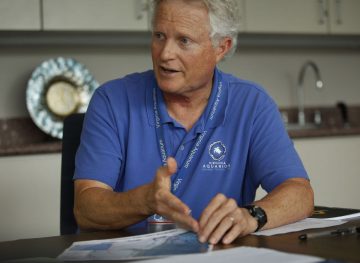 For more than a year, the Virginia Aquarium and Marine Science Center has been developing a case for making the canyon part of the sanctuary system. It has company. The National Aquarium in Baltimore and the New York Aquarium are working on nominations for ocean canyons off their states as well. “These are incredibly special places, amazing places,” said , the Virginia Aquarium’s director of research and conservation. The Atlantic canyons, of which there are more than 50, large and small, are “biological hot spots,” he said. They’re havens, feeding grounds, nurseries for thousands of species of creatures, from worms burrowing in the deepest sediments to whales breaching on the choppy surface. Swingle is leading the push for the Norfolk Canyon, the southernmost of the big ones. He said the Beach City Council will be asked soon to adopt a resolution of support, after which a nomination will be filed before year’s end with the National Oceanic and Atmospheric Administration. Read the rest here 08:27
For more than a year, the Virginia Aquarium and Marine Science Center has been developing a case for making the canyon part of the sanctuary system. It has company. The National Aquarium in Baltimore and the New York Aquarium are working on nominations for ocean canyons off their states as well. “These are incredibly special places, amazing places,” said , the Virginia Aquarium’s director of research and conservation. The Atlantic canyons, of which there are more than 50, large and small, are “biological hot spots,” he said. They’re havens, feeding grounds, nurseries for thousands of species of creatures, from worms burrowing in the deepest sediments to whales breaching on the choppy surface. Swingle is leading the push for the Norfolk Canyon, the southernmost of the big ones. He said the Beach City Council will be asked soon to adopt a resolution of support, after which a nomination will be filed before year’s end with the National Oceanic and Atmospheric Administration. Read the rest here 08:27
European Union backs off North American lobster ban
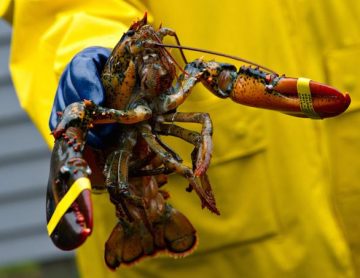 The European Union is backing off a Swedish proposal to ban imports of American lobster into 28 member countries. Officials with the EU say the European Commission has informed Sweden it will not propose the lobster be listed as invasive. It will instead pursue measures less likely to disrupt trade. The EU decided last month to conduct an extensive review of a proposal to ban lobsters imported from the U.S. and Canada. A scientific panel had concluded Sweden raised valid points in requesting to declare the American lobster an invasive species. Fishermen in New England and Canada, congressmen and scientists opposed the ban. They said the proposed ban wasn’t based in sound science. The dispute started when Sweden announced it had found 32 American lobsters in its waters. The federal Liberal government expressed alarm at word the EU was considering a ban, vowing it would “vigorously” try to convince the European Union that American lobster did not pose a threat. Fisheries Minister Dominic LeBlanc said Canadian and American officials had “compelling” scientific evidence that U.S. lobster is not an invasive species. Those who make a living fishing lobster could have lost $200 million in business if such a ban was imposed. link 18:19
The European Union is backing off a Swedish proposal to ban imports of American lobster into 28 member countries. Officials with the EU say the European Commission has informed Sweden it will not propose the lobster be listed as invasive. It will instead pursue measures less likely to disrupt trade. The EU decided last month to conduct an extensive review of a proposal to ban lobsters imported from the U.S. and Canada. A scientific panel had concluded Sweden raised valid points in requesting to declare the American lobster an invasive species. Fishermen in New England and Canada, congressmen and scientists opposed the ban. They said the proposed ban wasn’t based in sound science. The dispute started when Sweden announced it had found 32 American lobsters in its waters. The federal Liberal government expressed alarm at word the EU was considering a ban, vowing it would “vigorously” try to convince the European Union that American lobster did not pose a threat. Fisheries Minister Dominic LeBlanc said Canadian and American officials had “compelling” scientific evidence that U.S. lobster is not an invasive species. Those who make a living fishing lobster could have lost $200 million in business if such a ban was imposed. link 18:19
Tri Marine: Tuna prices, supply concerns influenced its $70 million cannery cannery closure
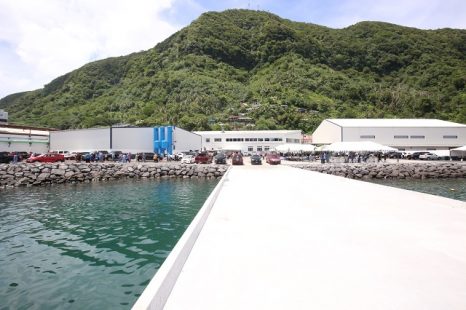 Fluctuating tuna prices, supply issues and other factors outside of the control of Tri Marine International led to the commercial demise of its $70 million cannery in American Samoa, the company said. The Oct. 13 announcement that the plant will cease canning operations as of Dec. 11 putting several hundred jobs in jeopardy came as a result of a series of factors, Bellevue, Washington-based Tri Marine said in a statement to Undercurrent News. “In truth, there were a number of factors outside of our control that influenced this difficult decision — the cost and abundance of tuna raw material in American Samoa, changes in free trade agreements, access to fishing grounds, the appeal of US-produced canned tuna in the market, market demand for higher quality sustainable and traceable tuna products, etc,” the company said. “To point to any one thing over another would miss the complexity of a challenging situation.” Read the story here 16:08
Fluctuating tuna prices, supply issues and other factors outside of the control of Tri Marine International led to the commercial demise of its $70 million cannery in American Samoa, the company said. The Oct. 13 announcement that the plant will cease canning operations as of Dec. 11 putting several hundred jobs in jeopardy came as a result of a series of factors, Bellevue, Washington-based Tri Marine said in a statement to Undercurrent News. “In truth, there were a number of factors outside of our control that influenced this difficult decision — the cost and abundance of tuna raw material in American Samoa, changes in free trade agreements, access to fishing grounds, the appeal of US-produced canned tuna in the market, market demand for higher quality sustainable and traceable tuna products, etc,” the company said. “To point to any one thing over another would miss the complexity of a challenging situation.” Read the story here 16:08
NPFMC progresses with halibut issues
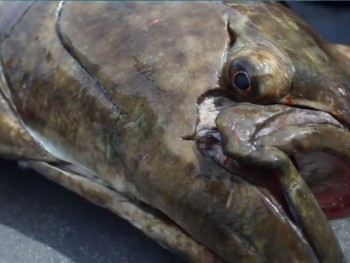 Federal fisheries managers took additional steps at their October meeting on halibut issues ranging from leasing of individual fishery shares to prohibited species catch limits, and a review of the halibut/sablefish IFQ program. None of these issues, which were in the early stage of consideration, are on draft agendas for upcoming council meetings Dec. 6-14 in Anchorage or Jan. 30-Feb. 7 in Seattle, although final action on two other halibut issues is anticipated in December. They are charter halibut management measures and the charter halibut recreational quota entry program. On the matter of IFQ leasing of quota shares, which was up for an initial review, the council expanded its suite of options for proposed action to allow leasing of halibut IFQ to community development quota groups in low abundance years. Read the rest here 14:36
Federal fisheries managers took additional steps at their October meeting on halibut issues ranging from leasing of individual fishery shares to prohibited species catch limits, and a review of the halibut/sablefish IFQ program. None of these issues, which were in the early stage of consideration, are on draft agendas for upcoming council meetings Dec. 6-14 in Anchorage or Jan. 30-Feb. 7 in Seattle, although final action on two other halibut issues is anticipated in December. They are charter halibut management measures and the charter halibut recreational quota entry program. On the matter of IFQ leasing of quota shares, which was up for an initial review, the council expanded its suite of options for proposed action to allow leasing of halibut IFQ to community development quota groups in low abundance years. Read the rest here 14:36
Non-profit group explores Nova Scotia for whale sanctuary project. Maine and British Columbia too!
 A U.S.-based group is exploring the coasts of Nova Scotia in hopes of finding a sanctuary where previously captive whales and dolphins could dive deeply in cold, North Atlantic waters. Lori Marino, director of the non-profit Whale Sanctuary Project, said Friday they are looking for a site where the creatures can roam a netted area roughly the size of 40 large sport fields. An alternative is needed for the captured whales and dolphins that are currently kept in marinas and spend their lives performing or being on display for the public, she said. “I want to give them back some of their welfare, some of their natural habitat and allow them to retire with freedom to do pretty much whatever they want without being imposed upon by people who want to ride on them and touch them and do tricks with them,” the Utah-based Marino said in an interview on Friday in Halifax. Read the story here 13:58
A U.S.-based group is exploring the coasts of Nova Scotia in hopes of finding a sanctuary where previously captive whales and dolphins could dive deeply in cold, North Atlantic waters. Lori Marino, director of the non-profit Whale Sanctuary Project, said Friday they are looking for a site where the creatures can roam a netted area roughly the size of 40 large sport fields. An alternative is needed for the captured whales and dolphins that are currently kept in marinas and spend their lives performing or being on display for the public, she said. “I want to give them back some of their welfare, some of their natural habitat and allow them to retire with freedom to do pretty much whatever they want without being imposed upon by people who want to ride on them and touch them and do tricks with them,” the Utah-based Marino said in an interview on Friday in Halifax. Read the story here 13:58
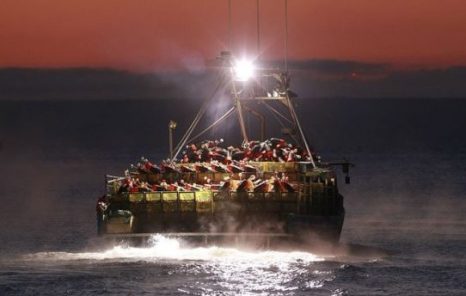
Alma Fleet Launch – A big party to see off the lobster fleet on season opener
The lobster fishermen of Alma will be cheered on by hundreds of spectators on Friday morning as they head off to work on the first day of lobster season. This morning a crowd of Alma residents gathered by the wharf to see off the boats that will bring back the delectable ocean-dwellers. Jane Chrysostom, the co-ordinator of the Alma Fleet Launch, said the launch has become a significant event in the community. “Last year at a very, very pre-dawn fleet launch we had over 600 people come. So, it’s a big draw,” said Chrysostom. The lobster industry is important to many small communities along the Bay of Fundy and Alma is no exception, which is why so many residents come out to send the ships off. There will be music, comedy and even food on hand for breakfast. And there is even an opportunity for people to experience the day from a lobster’s point of view. Read the rest here 10:25
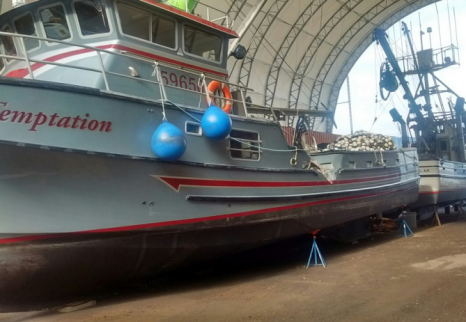
A real fish war – not just another Alaska yelling match
A real fish war – not just another Alaska yelling matching about who gets to catch what – was waged in Prince William Sound this August with one boat nearly sunk, one crewman seriously injured, and the Alaska Department of Law now pondering whether to file assault or other charges. The weapons of choice in the case? 58-foot salmon seiners. The alleged aggressor? One-time state ski racer Kami Cabana from Girwood. She was at the controls of the F/V Chugach Pearl when it t-boned the F/V Temptation. “I got really lucky when she hit me,” Temptation skipper Jason Long said in a telephone interview with craigmedred.news this week. There were davits fastened to the side of the Temptation where the Pearl struck amidships. They absorbed some of the impact of the ramming. Had the Pearl hit just a little farther aft, Long said, it could have ruptured the Temptations fish hold and put his ship in serious danger. Had the Pearl hit just a little farther forward, it would have smashed the Temptation’s cabin. Long said he wanted at first to think the collision an accident, but Cabana’s behavior afterward – with a Temptation crewman down on the deck and bleeding profusely – argued otherwise. Read the full story here 09:51

Stone crabbers get ready for Saturday’s first pull of season
It might not be ideal stone crabbing weather, but the Meschelles are pulling their traps on Saturday no matter what. “My son said, ‘We’re going out Saturday, darn it, even if it’s windy,’ ” said Sheila Meschelle, who has been stone crabbing with her son, Nathan, and husband, Todd, for the past four years. Nathan Meschelle started crabbing in high school with a childhood friend’s dad and went straight into commercial fishing after he graduated. It’s a labor of love for the family, who take their 30-foot crabbing boat out each year to bring in the precious claws for diners across Florida. Stone crab season starts on Saturday and runs through May 15. Last year’s season was anything but a disappointment for crabbers and restaurateurs. At one point, the Meschelles were required to take days off because they were bringing in such a haul. Read the story here 09:15
Declining biotoxin levels – Some Down East shellfishing areas reopened
On Thursday, the Department of Marine Resources re-opened some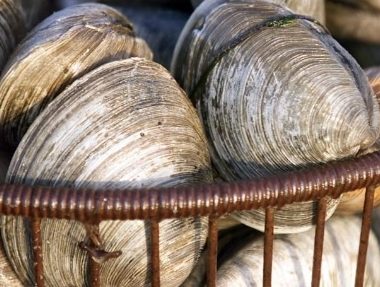 of the coastline between Calais and Cutler for the harvest of clams, mussels and carnivorous snails, and said clamming will be allowed on a portion of the coast between Isle Au Haut to Winter Harbor. Shellfish harvesting on much of the Down East coast remains restricted because of an algae bloom that produces a toxin that can cause amnesic shellfish poisoning, or ASP, in humans. It is unclear if the limited reopening Thursday means the bloom is clearing up or if harvesting bans will be removed in other areas soon. “We can’t speculate, but we continue to test shellfish and phytoplankton along the coast, both inside and outside the impacted areas, and will re-open areas as soon as test results allow,” said Jeff Nichols, a spokesman for the department of Marine Resources. Lifting the emergency restrictions was a relief to clammers who have been kept off the flats for the last two weeks. Read the story here 08:32
of the coastline between Calais and Cutler for the harvest of clams, mussels and carnivorous snails, and said clamming will be allowed on a portion of the coast between Isle Au Haut to Winter Harbor. Shellfish harvesting on much of the Down East coast remains restricted because of an algae bloom that produces a toxin that can cause amnesic shellfish poisoning, or ASP, in humans. It is unclear if the limited reopening Thursday means the bloom is clearing up or if harvesting bans will be removed in other areas soon. “We can’t speculate, but we continue to test shellfish and phytoplankton along the coast, both inside and outside the impacted areas, and will re-open areas as soon as test results allow,” said Jeff Nichols, a spokesman for the department of Marine Resources. Lifting the emergency restrictions was a relief to clammers who have been kept off the flats for the last two weeks. Read the story here 08:32
MSA – Fishing rule gives regional councils more flexibility on catch limits
 The rule, already under fire from environmental groups in a rare conflict with the administration, could help mollify the recreational fishing industry and its Republican allies in Congress. They’ve criticized the administration for not relaxing restrictions on catches, given that many fish stocks have rebounded dramatically over the past few years. Officials with the fisheries division of the National Oceanic and Atmospheric Administration, said the change, years in the making, strikes an appropriate balance between current law, which has helped rescue dozens of once over-fished stocks, and the needs of the economically vital recreational and commercial industry. Some environmental groups oppose the change, saying that giving more “flexibility” to the eight regional councils that set catch limits in federal waters could soften protections that have worked well. “Unfortunately, the new rules weaken the foundations of U.S. sustainable fisheries management,” said Meredith Moore, director of the fish conservation program at Ocean Conservancy. “By allowing risky management decisions that leave stocks at low levels, we leave fish populations and fishing communities vulnerable.” Read the story here. Read the NOAA press release – NOAA announces revisions to federal fishery management guidelines click here 20:07
The rule, already under fire from environmental groups in a rare conflict with the administration, could help mollify the recreational fishing industry and its Republican allies in Congress. They’ve criticized the administration for not relaxing restrictions on catches, given that many fish stocks have rebounded dramatically over the past few years. Officials with the fisheries division of the National Oceanic and Atmospheric Administration, said the change, years in the making, strikes an appropriate balance between current law, which has helped rescue dozens of once over-fished stocks, and the needs of the economically vital recreational and commercial industry. Some environmental groups oppose the change, saying that giving more “flexibility” to the eight regional councils that set catch limits in federal waters could soften protections that have worked well. “Unfortunately, the new rules weaken the foundations of U.S. sustainable fisheries management,” said Meredith Moore, director of the fish conservation program at Ocean Conservancy. “By allowing risky management decisions that leave stocks at low levels, we leave fish populations and fishing communities vulnerable.” Read the story here. Read the NOAA press release – NOAA announces revisions to federal fishery management guidelines click here 20:07
The Gloucester Fisherman’s and Seaman’s Widows and Orphan’s Aid Society Fund
 In 1865, community members formed the Gloucester Fisherman’s and Seaman’s Widows and Orphan’s Aid Society Fund to help fishermen’s families. The Society continues to help widows and orphans of Cape Ann fishermen that have lost their lives, to this day. When the Society receives an application for funding, it is reviewed, and if the applicant meets the requirements, a monthly benefit of $125.00, and an annual Christmas bonus is awarded. If anyone is interested in applying for this, Please write to Sam Parisi, 108 Commercial Street, Gloucester, Ma. 01930, or email him at [email protected] 19:09
In 1865, community members formed the Gloucester Fisherman’s and Seaman’s Widows and Orphan’s Aid Society Fund to help fishermen’s families. The Society continues to help widows and orphans of Cape Ann fishermen that have lost their lives, to this day. When the Society receives an application for funding, it is reviewed, and if the applicant meets the requirements, a monthly benefit of $125.00, and an annual Christmas bonus is awarded. If anyone is interested in applying for this, Please write to Sam Parisi, 108 Commercial Street, Gloucester, Ma. 01930, or email him at [email protected] 19:09
Coast Guard Aircrew Medevacs Crewman from Fishing Vessel West of Port Orford, Ore.
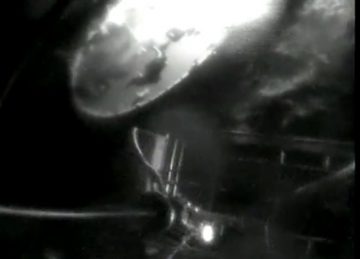 A Coast Guard aircrew medically evacuated a crewman who reportedly fractured his arm on a 285-foot fishing vessel 25-miles west of Port Orford, Thursday morning. An MH-65 helicopter crew from Coast Guard Sector North Bend hoisted the 74-year-old male from the fishing vessel American Triumph and transferred him to local medical services waiting in Coos Bay. Coast Guard watchstanders at Sector North Bend were notified at 3 a.m. and directed the launch of the Dolphin crew. The aircrew arrived on scene at 4:41 a.m. and transferred the patient to EMS at 5:28 a.m The weather at the time of the rescue was reported with low visibility, heavy rain, 50 knot gusting winds and 15-20 foot sea swells. Watch video here 17:23
A Coast Guard aircrew medically evacuated a crewman who reportedly fractured his arm on a 285-foot fishing vessel 25-miles west of Port Orford, Thursday morning. An MH-65 helicopter crew from Coast Guard Sector North Bend hoisted the 74-year-old male from the fishing vessel American Triumph and transferred him to local medical services waiting in Coos Bay. Coast Guard watchstanders at Sector North Bend were notified at 3 a.m. and directed the launch of the Dolphin crew. The aircrew arrived on scene at 4:41 a.m. and transferred the patient to EMS at 5:28 a.m The weather at the time of the rescue was reported with low visibility, heavy rain, 50 knot gusting winds and 15-20 foot sea swells. Watch video here 17:23

Tri Marine Group announces closure of Samoa Tuna Processors cannery December 11
Employees of Samoa Tuna Processors are learning that the cannery is shutting down indefinitely December 11 due to “adverse business conditions”. The $70 million cannery was officially opened in January of last year, but only started production a few months later because of delayed shipping due to industrial action on the west coast. The closure would put close to 1,000 workers out of jobs and send ripple effects throughout the community and also Samoa where the majority of production employees are from. Renato Curto, CEO of the Tri Marine Group said in a statement, “This is an incredibly difficult decision and one we make with a great deal of reluctance. “Our hearts go out to STP’s employees, suppliers, service providers and everyone else who depends on STP’s operations.” The statement said the challenging economics of canning tuna in American Samoa combined with external factors facing STP make Tri Marine’s private-label focused business model for operating the plant economically unsustainable in today’s market. Tri Marine is currently evaluating alternatives for the facility including outright sale, preferably to a strategic buyer that would minimize job losses. Read the rest here 17:04
Yukon kings are on the rebound, Canadians, however, are fishing less
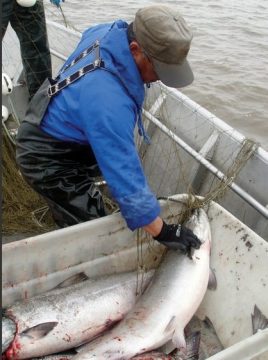 Yukon River chinook stocks are on the upswing, according to a season summary, though not everybody is fishing for the surplus. Holly Carroll, the area management biologist for the Yukon River section of the Alaska Department of Fish and Game, said the painful restrictions on subsistence harvests have paid off. “We wouldn’t have made escapement goals at all if we hadn’t restricted harvest,” Carroll said. “We have to restrict the harvest just to meet the bare minimum for sustaining the run. The restrictions in the subsistence fishery have helped to build the numbers back up.” With 176,895 fish past the sonar counter at Pilot Station, the 2016 chinook run has nosed back up to the most recent 20-year average of 178,000. Along with total run numbers, the amount of chinook into Canada is improving. However, First Nations communities and Canada fisheries managers have different ideas than Alaska, and much of the run sent over the border went unharvested. A major goal of ADFG Yukon River management aims to send between 42,500 and 55,000 chinook salmon over the Canadian border at Eagle as per the Pacific Salmon Treaty. Read the story here 15:54
Yukon River chinook stocks are on the upswing, according to a season summary, though not everybody is fishing for the surplus. Holly Carroll, the area management biologist for the Yukon River section of the Alaska Department of Fish and Game, said the painful restrictions on subsistence harvests have paid off. “We wouldn’t have made escapement goals at all if we hadn’t restricted harvest,” Carroll said. “We have to restrict the harvest just to meet the bare minimum for sustaining the run. The restrictions in the subsistence fishery have helped to build the numbers back up.” With 176,895 fish past the sonar counter at Pilot Station, the 2016 chinook run has nosed back up to the most recent 20-year average of 178,000. Along with total run numbers, the amount of chinook into Canada is improving. However, First Nations communities and Canada fisheries managers have different ideas than Alaska, and much of the run sent over the border went unharvested. A major goal of ADFG Yukon River management aims to send between 42,500 and 55,000 chinook salmon over the Canadian border at Eagle as per the Pacific Salmon Treaty. Read the story here 15:54
Japanese Fishermen Painted as ‘Sadists’ in Oscar-Winner “The Cove”
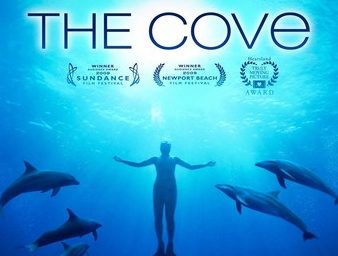 A group of Japanese fishermen have broken their silence over a controversial annual dolphin kill that was the focus of the Oscar-winning documentary “The Cove”. “In the film we are portrayed like a town of criminals,” said Yoshiharu Kai, head of the Taiji Fishermen’s Union. “It’s an interesting film but it’s not a truthful film.” This week marked the first time representatives of the southwestern Japanese fishing village of Taiji have spoken to international media about the impact felt in their community after the release of “The Cove”. The Louie Psihoyos-directed documentary caused an international uproar following its release in 2009. The film takes an unflinching look at a practice that dates back 400 years, with close-up scenes of slaughter after dolphins are driven close in to shore, and of disputes between the fishermen and environmental protesters. Highly publicized and widespread social and international condemnation of the kill followed the release of the film. Concerns were also raised over the methods used by the filmmakers to capture footage used, and about the film’s general depiction of Japanese people. Read the story here 12:27
A group of Japanese fishermen have broken their silence over a controversial annual dolphin kill that was the focus of the Oscar-winning documentary “The Cove”. “In the film we are portrayed like a town of criminals,” said Yoshiharu Kai, head of the Taiji Fishermen’s Union. “It’s an interesting film but it’s not a truthful film.” This week marked the first time representatives of the southwestern Japanese fishing village of Taiji have spoken to international media about the impact felt in their community after the release of “The Cove”. The Louie Psihoyos-directed documentary caused an international uproar following its release in 2009. The film takes an unflinching look at a practice that dates back 400 years, with close-up scenes of slaughter after dolphins are driven close in to shore, and of disputes between the fishermen and environmental protesters. Highly publicized and widespread social and international condemnation of the kill followed the release of the film. Concerns were also raised over the methods used by the filmmakers to capture footage used, and about the film’s general depiction of Japanese people. Read the story here 12:27
North Carolina’s seafood deliveries continue in wake of Hurricane Matthew
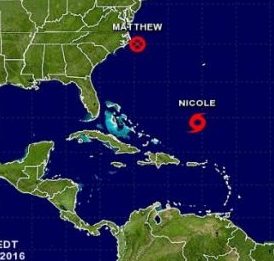 While the flooding continues in North Carolina and portions of major highways remain closed, seafood distributors and wholesalers in the state are continuing to make deliveries following Hurricane Matthew’s landfall. “It is challenging to get to some places, but overall, we are getting our orders out. Our drivers are finding ways to do it,” said a source with the Charlotte, N.C, office for Inland Seafood, a major seafood distributor based in Atlanta. Major portions of Interstate 95 and Interstate 40 are still closed, causing headaches for seafood deliveries to restaurants and retailers. And some businesses along the N.C. coast were without power until 11 October and 12 October. “We were spared with the winds, but with all that water coming in – and rivers at a record high –we dealing with the aftermath,” said Lin Peterson, co-owner of Raleigh, N.C.-based Locals Seafood, a wholesaler, retailer and community supported fishery (CSF). “We just focus on seafood off the N.C. coast, so we are really affected when this happens.” Read the story here 11:49
While the flooding continues in North Carolina and portions of major highways remain closed, seafood distributors and wholesalers in the state are continuing to make deliveries following Hurricane Matthew’s landfall. “It is challenging to get to some places, but overall, we are getting our orders out. Our drivers are finding ways to do it,” said a source with the Charlotte, N.C, office for Inland Seafood, a major seafood distributor based in Atlanta. Major portions of Interstate 95 and Interstate 40 are still closed, causing headaches for seafood deliveries to restaurants and retailers. And some businesses along the N.C. coast were without power until 11 October and 12 October. “We were spared with the winds, but with all that water coming in – and rivers at a record high –we dealing with the aftermath,” said Lin Peterson, co-owner of Raleigh, N.C.-based Locals Seafood, a wholesaler, retailer and community supported fishery (CSF). “We just focus on seafood off the N.C. coast, so we are really affected when this happens.” Read the story here 11:49
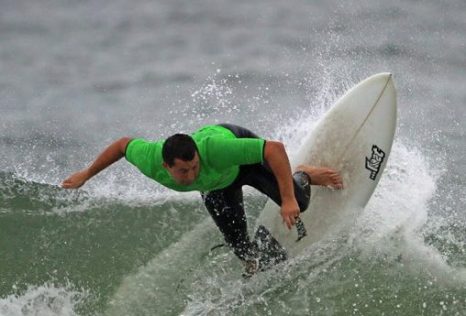
New Jersey Scalloper Nick Rossi makes the scene at the 10th Annual Clam Jam!
For 10 years now, local apparel company Jetty, has held its Clam Jam (click for standings and great photos) each fall. At its root, it’s a surf contest. But it’s also a celebration of Island surfing and the local community at large. One of the aspects of the contest that keeps it a beloved event is the fact that it’s run “on call,” meaning the date of the Clam Jam is determined by the waves. Once the window period opens the first weekend after Chowderfest, it can be run any Saturday or Sunday with good swell and conditions. Surfers and spectators get excited year after year because of the quality waves. Alternatively, wives, girlfriends, and families have a running joke about not being able to make plans through the whole month of October, at the possibility that the Clam Jam might run. Rossi has surfed nine of 10 Clam Jams and won with John Bonner back in 2010. He had just gotten back from an 11-day fishing trip at daybreak on Saturday morning. Read the story here 09:20
Pacific Bluefin Tuna Heads Toward Protection
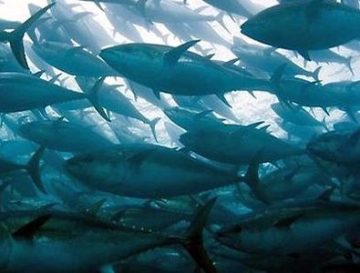 Thirteen conservation groups and a former National Fisheries biologist petitioned for federal protection for Pacific bluefin tuna, and the marine agency agreed listing may be warranted. The National Marine Fisheries Service (NMFS) announced Tuesday that it will begin a 12-month status review of the iconic fish as the first step in the long process to secure Endangered Species Act protection for the overfished species. The Center for Biological Diversity, a frequent petitioner and litigator on behalf of imperiled species, was joined by Earthjustice, Defenders of Wildlife, WildEarth Guardians, Sierra Club, Turtle Island Restoration Network, the Ocean Foundation, Center for Food Safety, Greenpeace, Mission Blue, Recirculating Farms Coalition, The Safina Center, SandyHook SeaLife Foundation, and Jim Chambers, a retired NMFS biologist, owner of Prime Seafood sustainable seafood restaurant supply company and member of the Seafood Choices Alliance. Read the rest here 08:42
Thirteen conservation groups and a former National Fisheries biologist petitioned for federal protection for Pacific bluefin tuna, and the marine agency agreed listing may be warranted. The National Marine Fisheries Service (NMFS) announced Tuesday that it will begin a 12-month status review of the iconic fish as the first step in the long process to secure Endangered Species Act protection for the overfished species. The Center for Biological Diversity, a frequent petitioner and litigator on behalf of imperiled species, was joined by Earthjustice, Defenders of Wildlife, WildEarth Guardians, Sierra Club, Turtle Island Restoration Network, the Ocean Foundation, Center for Food Safety, Greenpeace, Mission Blue, Recirculating Farms Coalition, The Safina Center, SandyHook SeaLife Foundation, and Jim Chambers, a retired NMFS biologist, owner of Prime Seafood sustainable seafood restaurant supply company and member of the Seafood Choices Alliance. Read the rest here 08:42
The Kodiak fish debate: Senate candidates square off
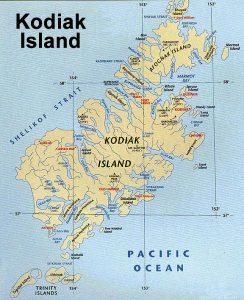 Republican U.S. Sen. Lisa Murkowski squared off with her challengers Wednesday for the first time, fielding criticism and questions from Democrat Ray Metcalfe and independents Margaret Stock and Breck Craig at the biennial Kodiak fish debate. Moderators quizzed the candidates on nuts-and-bolts fisheries policy during the lively, two-hour discussion at the port town. And a few only-in-Alaska questions were thrown in as well, like when the candidates were asked to name their personal seafood preferences. Murkowski, who sported Xtratuf boots and a fish pin, was quick to demonstrate her familiarity with fish-specific issues like discharge rules, Alaska’s aging fishing crews, and Canadian mines that threaten the state’s fish habitat. But her rivals tried to put her on the defensive by touting their own fisheries experience, highlighting Congress’ dysfunction, and stressing how seriously they take climate change, which threatens Alaska fisheries through the process of ocean acidification. Joe Miller, the Republican-turned-Libertarian candidate, did not attend even after criticizing the incumbent senator for “hiding” from the public by not participating in more debates. Read the rest here 08:27
Republican U.S. Sen. Lisa Murkowski squared off with her challengers Wednesday for the first time, fielding criticism and questions from Democrat Ray Metcalfe and independents Margaret Stock and Breck Craig at the biennial Kodiak fish debate. Moderators quizzed the candidates on nuts-and-bolts fisheries policy during the lively, two-hour discussion at the port town. And a few only-in-Alaska questions were thrown in as well, like when the candidates were asked to name their personal seafood preferences. Murkowski, who sported Xtratuf boots and a fish pin, was quick to demonstrate her familiarity with fish-specific issues like discharge rules, Alaska’s aging fishing crews, and Canadian mines that threaten the state’s fish habitat. But her rivals tried to put her on the defensive by touting their own fisheries experience, highlighting Congress’ dysfunction, and stressing how seriously they take climate change, which threatens Alaska fisheries through the process of ocean acidification. Joe Miller, the Republican-turned-Libertarian candidate, did not attend even after criticizing the incumbent senator for “hiding” from the public by not participating in more debates. Read the rest here 08:27
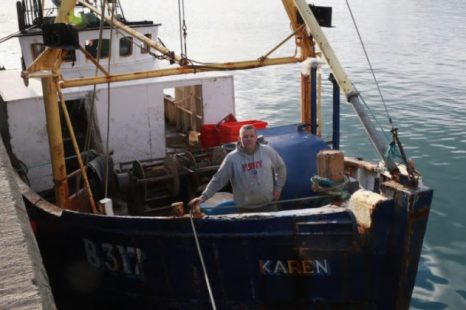
Marine Accident Investigation Branch: Royal Navy submarine towing trawler endangered fishermen’s lives
A Royal Navy submarine which towed a fishing trawler at speed through the Irish Sea endangered the lives of the crew, inspectors said. The Karen was trailed backwards at seven knots in April 2015 after the sub snagged in its nets 15 miles from Ardglass – one of Northern Ireland’s main fishing ports in the south east. Commanders were unaware of the collision until three hours later after they failed to realise they were passing beneath a fishing vessel with nets rather than a merchant cargo or passenger ship, the Marine Accident Investigation Branch (MAIB) report said. Steve Clinch, chief inspector of marine accidents, said: “Eighteen months ago, the actions of the command team of a Royal Navy submarine placed the lives of the crew of the trawler Karen in danger. Read the rest here 20:11
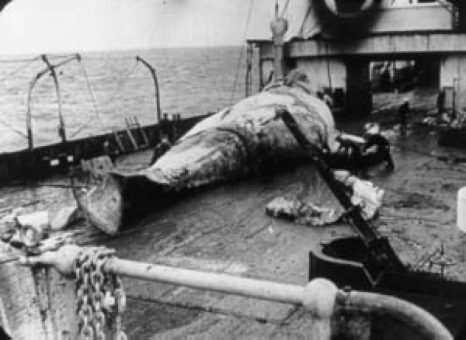
The bones in the Smithsonian’s ‘whale warehouse’ are relics of a lost world
The smell hits you first: a nose-wrinkling, fishy stench, cut by the sharp reek of formaldehyde. Then your eyes adjust to the dim fluorescent light, and the sight takes your breath away. The National Museum of Natural History’s whale warehouse, a football field-sized facility in Suitland, Md., resembles a graveyard for giants. There are backbones as long as tennis courts, massive skulls, rib cages that could fit an entire school bus inside. There are fossil remains dating back 40 million years, to a time when whale ancestors, which lived on land, were just beginning their transition to creatures of the sea. A 24-foot pale gray jawbone at the center of the facility, taken from a blue whale slain by whalers 77 years ago, is the largest single skeletal element in any museum collection on Earth. “There are certainly no other museums that have this,” said NMNH fossil marine mammal curator Nick Pyenson, who oversees the collection.,,, Walsh was a young U.S. Coast Guard officer who had been assigned to the Ulysses in accordance with a 1937 international treaty to regulate whaling. His job was to document the factory ship’s catch and ensure that it abided by the new laws. Video, read the article here 18:16
Waldoboro Selectman Emphasizes Importance of Jobs, Commercial Fishing Industry in Run for House
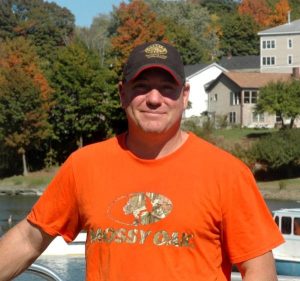 Waldoboro selectman is hoping to parlay his time at the municipal level of government into a role in the Maine State Legislature. Abden Simmons, R-Waldoboro, is looking to represent House District 91, which includes Friendship, part of Union, and Washington in addition to Waldoboro. Simmons, who was elected to the Waldoboro Board of Selectmen in June 2015, said he believes the Legislature needs to create favorable conditions for businesses, which, in turn, will lead to job creation. Another big part of Simmons’ focus is the commercial fishing industry. He believes the commercial fishing industry is an integral part of the state’s economy that deserves to be defended in the Legislature. “I want to make sure commercial fishing doesn’t get interfered with any more than it already is,” Simmons said. Simmons is the executive director of the Maine Elver Fisherman Association, and has spent time on the state’s shellfish advisory council, in addition to taking part in the governor’s task force on the invasive European green crab. Read the story here 16:36
Waldoboro selectman is hoping to parlay his time at the municipal level of government into a role in the Maine State Legislature. Abden Simmons, R-Waldoboro, is looking to represent House District 91, which includes Friendship, part of Union, and Washington in addition to Waldoboro. Simmons, who was elected to the Waldoboro Board of Selectmen in June 2015, said he believes the Legislature needs to create favorable conditions for businesses, which, in turn, will lead to job creation. Another big part of Simmons’ focus is the commercial fishing industry. He believes the commercial fishing industry is an integral part of the state’s economy that deserves to be defended in the Legislature. “I want to make sure commercial fishing doesn’t get interfered with any more than it already is,” Simmons said. Simmons is the executive director of the Maine Elver Fisherman Association, and has spent time on the state’s shellfish advisory council, in addition to taking part in the governor’s task force on the invasive European green crab. Read the story here 16:36
P.E.I. fall lobster season wraps up with high catches, prices
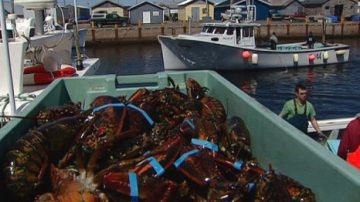 P.E.I. fishermen hauled in as many lobsters this fall as they did last year — more, in some areas — and the P.E.I. Fishermen’s Association is crediting the good weather. The season, which began the first week of August, wrapped up Monday for 225 Island fishermen, who share the waters with nearly 500 from New Brunswick and a handful from Nova Scotia. “The weather this year was unheard of,” PEIFA president Craig Avery enthusiastically told CBC Radio: Mainstreet‘s Angela Walker. “There was only probably a couple of lost fishing days and you know with that, that kind of helped the catches for sure.” Read the rest here 16:01
P.E.I. fishermen hauled in as many lobsters this fall as they did last year — more, in some areas — and the P.E.I. Fishermen’s Association is crediting the good weather. The season, which began the first week of August, wrapped up Monday for 225 Island fishermen, who share the waters with nearly 500 from New Brunswick and a handful from Nova Scotia. “The weather this year was unheard of,” PEIFA president Craig Avery enthusiastically told CBC Radio: Mainstreet‘s Angela Walker. “There was only probably a couple of lost fishing days and you know with that, that kind of helped the catches for sure.” Read the rest here 16:01
Coast Guard medevacs man off fishing vessel near Hatteras, NC
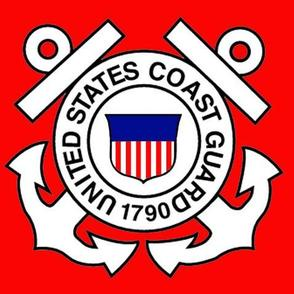 The Coast Guard medevaced a man Tuesday off a fishing vessel in the Pamlico Sound near Hatteras. Sector North Carolina watchstanders were notified at approximately 9:15 p.m. Tuesday a man aboard the fishing vessel Jane Carolyn, was reportedly unconscious and would not awaken. A Coast Guard 47-foot Motor Lifeboat crew from Station Hatteras Inlet launched at approximately 10:00 p.m. and arrived on scene at approximately 10:40 p.m. The crew medevaced and transferred the man to Outer Banks Hospital in Nags Head for further medical attention. “We were glad the crew was able to arrive quickly to the fishing vessel,” said Craig Sanders, operations unit controller at Sector North Carolina. “We value the training of our crews to respond quickly to these situations.” Link 12:51
The Coast Guard medevaced a man Tuesday off a fishing vessel in the Pamlico Sound near Hatteras. Sector North Carolina watchstanders were notified at approximately 9:15 p.m. Tuesday a man aboard the fishing vessel Jane Carolyn, was reportedly unconscious and would not awaken. A Coast Guard 47-foot Motor Lifeboat crew from Station Hatteras Inlet launched at approximately 10:00 p.m. and arrived on scene at approximately 10:40 p.m. The crew medevaced and transferred the man to Outer Banks Hospital in Nags Head for further medical attention. “We were glad the crew was able to arrive quickly to the fishing vessel,” said Craig Sanders, operations unit controller at Sector North Carolina. “We value the training of our crews to respond quickly to these situations.” Link 12:51
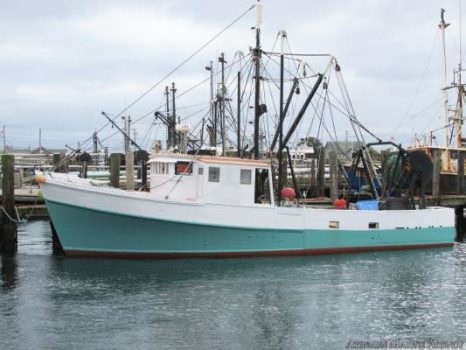
Athearn Marine Agency Boat of the Week: 55′ Lash Wood Stern Trawler, Detroit 12-V-71
Specifications, information and 24 photo’s click here To see all the boats in this series, Click here 12:30






